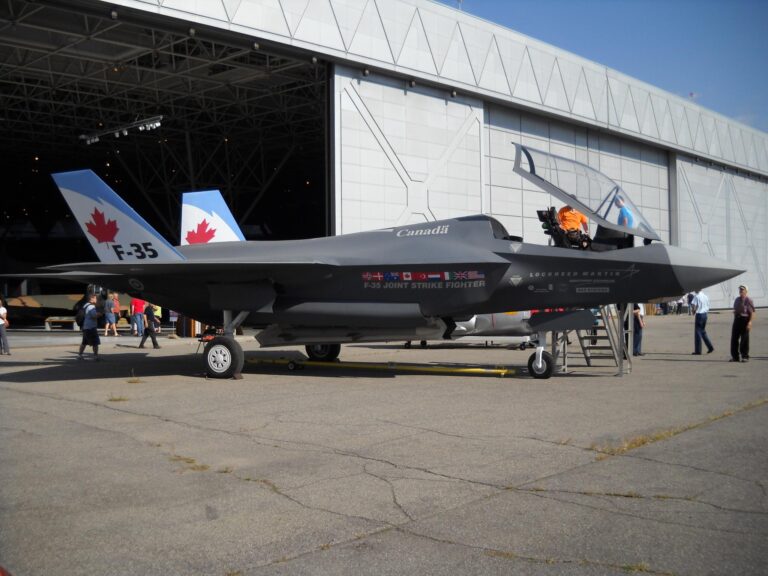The United Kingdom’s procurement strategy for the F-35 Lightning II fighter jet represents a complex balancing act between operational readiness, industrial capability, and budgetary constraints. As the UK seeks to maintain its status as a leading air power while managing evolving defense priorities, the approach to acquiring and integrating the fifth-generation stealth aircraft highlights both strategic ambitions and fiscal realities. This article explores the intricacies of the UK’s F-35 program, examining how policymakers and military planners navigate challenges to ensure sustained air combat effectiveness in a rapidly changing global security environment.
UK Faces Challenges in Balancing Cost and Capability in F-35 Procurement
The UK’s pursuit of the F-35 Lightning II has exposed a complex tension between maintaining robust defense capabilities and adhering to stringent budget constraints. Decision-makers face difficult trade-offs, balancing the need to field cutting-edge stealth technology against the rising costs of production and sustainment. As procurement prices fluctuate and operational demands evolve, the UK’s Ministry of Defence must weigh immediate capability needs with the long-term sustainability of the fleet. These challenges have sparked debates within defense circles on whether to prioritize quantity or quality when it comes to the size and readiness of the F-35 fleet.
Several factors compound the challenge, from international supply chain issues to domestic industrial commitments. Maintaining a skilled workforce and securing local manufacturing contracts are vital to preserving the UK’s aerospace sector but add layers of complexity to the budgeting process. Below is a summary of key considerations shaping procurement decisions:
- Budget Flexibility: Balancing upfront acquisition costs with lifecycle support expenses.
- Capability Requirements: Ensuring readiness for multifaceted threat environments.
- Industrial Participation: Protecting UK jobs while controlling program costs.
- Alliance Obligations: Meeting NATO interoperability standards without overspending.
| Aspect | Impact on Procurement | UK Response |
|---|---|---|
| Cost Inflation | Pressure to reduce order quantities | Extended delivery timelines |
| Technological Upgrades | Increased lifecycle expenses | Investment in in-service support |
| Industrial Benefit | Higher domestic costs | Focus on local content in contracts |
Strategic Partnerships and Industrial Benefits Drive UK’s F-35 Decisions
At the heart of the UK’s F-35 procurement strategy lies a sophisticated web of strategic partnerships that extend far beyond the realm of military capability. The integration of British industry within the global F-35 supply chain has not only bolstered defense capabilities but also cultivated economic growth and technological innovation domestically. Key aerospace and defense firms have secured contracts, ensuring the UK remains a critical player in future upgrades and maintenance programs. This interdependence underscores a deliberate approach where industrial benefits are weighed alongside tactical viability, shaping procurement timelines and commitment levels.
Benefits arising from these industrial synergies include:
- Job creation across highly skilled sectors
- Technological knowledge transfer to UK firms
- Long-term sustainment and upgrade roles
- Enhanced export opportunities for British aerospace products
| Industrial Impact | Estimated Value (£ Billion) |
|---|---|
| Contracts awarded to UK companies | ~4.5 |
| Domestic job support | 15,000+ |
| R&D investment linked to F-35 | 1.2 |
Recommendations for Enhancing Transparency and Long-Term Sustainment Planning
To improve clarity and accountability in the UK’s F-35 procurement, it is vital to adopt a multi-faceted approach that prioritizes open communication with the public and defense stakeholders. Key measures include:
- Regularly published progress reports that detail acquisition milestones, budget adjustments, and delivery timelines.
- Independent audits and oversight to ensure procurement decisions are transparent and grounded in rigorous analysis.
- Stakeholder engagement forums that allow industry partners, military personnel, and government representatives to collaboratively address challenges and share insights.
Looking beyond initial acquisition, sustainable life-cycle management must be embedded within the strategy. This includes long-range planning for maintenance, upgrades, and training capacity-elements essential for operational readiness. The table below outlines a strategic framework to align transparency with sustainment objectives:
| Aspect | Short-Term Action | Long-Term Goal |
|---|---|---|
| Data Sharing | Publish quarterly procurement dashboards | Create a centralized, publicly accessible data portal |
| Financial Oversight | Engage third-party audit firms | Establish a permanent Parliamentary review committee |
| Infrastructure & Training | Increase investment in pilot and technician programs | Develop modular training centers nationwide |
Wrapping Up
In navigating the complexities of its F-35 procurement strategy, the UK continues to balance operational demands, budgetary constraints, and industrial ambitions. As the programme advances, its success will hinge not only on delivering cutting-edge capabilities to the Royal Air Force and Royal Navy but also on sustaining the domestic defence sector and adapting to evolving geopolitical challenges. The coming years will prove critical in determining whether this multifaceted approach can meet the strategic imperatives outlined by policymakers and defence planners alike.




